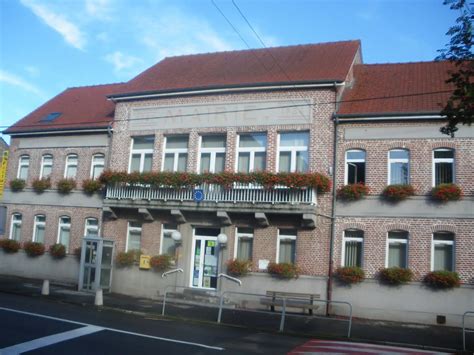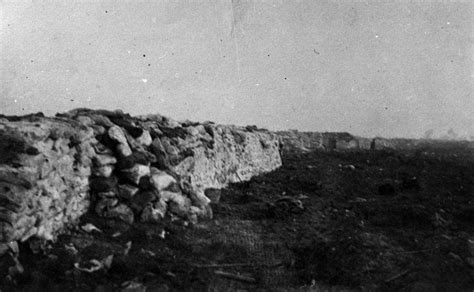festubert and givenchy battle | fort festubert festubert and givenchy battle Tactical developmentsThe Battle of Festubert was the continuation of the Battle of Aubers Ridge (9 May) and part of the larger French See more Dateks.lv mājaslapā iespējams veikt pasūtījuma apmaksu ar maksājumu karti – tas nodrošinās maksimāli ātru pasūtījuma apstrādi. Piegāde ar DPD kurjerpastu Preces iespējams pasūtīt ar piegādi tieši mājās vai birojā.
0 · what did festubert do
1 · fort festubert
2 · festubert battle timeline
3 · battle of festubert ww1
4 · battle of festubert summary
5 · battle of festubert
Modern Louis Vuitton items have date codes, not serial numbers. Date codes identify the manufacturing location and production date for a Louis Vuitton item, but they do not verify authenticity by themselves. Many counterfeit items have date codes that match the correct format.
what did festubert do
vente prive louis vuitton
The Battle of Festubert (15–25 May 1915) was an attack by the British army in the Artois region of France on the western front during World War I. The offensive formed part of a series of attacks by the French Tenth Army and the British First Army in the Second Battle of Artois (3 May – 18 June 1915). After the failure . See moreTactical developmentsThe Battle of Festubert was the continuation of the Battle of Aubers Ridge (9 May) and part of the larger French See moreBritish planThe attack was made by the British First Army (General Sir Douglas Haig) against a salient in the German lines . See moreThe battle was preceded by a 60-hour bombardment by 433 artillery pieces that fired about 100,000 shells. This bombardment failed to significantly damage the front line defences of the German 6th Army and the initial advance only made progress . See more
CasualtiesThe British suffered 16,648 casualties from 15/16 to 25 May; the 2nd Division suffered 5,445 casualties, the 7th Division 4,123, the 47th Division 2,355, the Canadian Division 2,204 and the 7th (Meerut) Division 2,521 . See more
The 100th anniversary of the battle saw it commemorated; some of the most poignant were those held in the Highlands of Scotland, in particular in shinty playing communities, which were affected disproportionately by losses in the battle. Skye Camanachd See more• List of Canadian battles during World War I See more1. ^ "Indian Army on the Western Front". Retrieved 10 August 2020.2. ^ Farndale 1986, p. 107.3. ^ Edmonds 1928, pp. 49–52.4. ^ Edmonds 1928, pp. 52–55. See more The Battle of Festubert was the second major engagement fought by Canadian troops in the First World War. The First Canadian Division (see Canadian Expeditionary Force) .
During the Festubert offensive, it was expected that German defences would be captured by a pincer movement: one division would attack Chocolat Menier, while a second .
In May and June of 1915, at Festubert and Givenchy in Northern France, Canadian troops went on the offensive for the first time in the First World War. The battles were part of the Allied effort to .The Festubert attack was launched by Sir Douglas Haig in response to pressure applied to the British Expeditionary Force (BEF) by Joffre, and was the BEF's second attack during the .A battle honour incorporating the tactical incidents “Second Action of Givenchy, 1915”, “First Attack on Bellewaarde”, and “Actions of Hooge”, formally entitled the “Battle of Festubert”, and .
fort festubert
Meanwhile the German infantry was moving forward at Festubert, on the point of enveloping Givenchy, and had taken more than 800 British soldiers prisoner. In response to the threat, .At the May 1915 Battle of Festubert, Canadian troops gained little ground and suffered terrible casualties. A Risky Operation. Just south of the Ypres salient, Sir Douglas Haig’s First British .May 15th, 1915 to May 27th, 1915. The Battle of Festubert (1915) took place just south of Ypres. With the Allied elements composing of the 1st British Army and two Canadian Brigades (2nd .The Battle of Festubert (15–25 May 1915) was an attack by the British army in the Artois region of France on the western front during World War I. The offensive formed part of a series of attacks by the French Tenth Army and the British First Army in the Second Battle of Artois (3 May – 18 June 1915). After the failure of the breakthrough .
The Battle of Festubert was the second major engagement fought by Canadian troops in the First World War. The First Canadian Division (see Canadian Expeditionary Force) was part of a wider British offensive against German lines near the village of Festubert, France, from 15–25 May, 1915.
During the Festubert offensive, it was expected that German defences would be captured by a pincer movement: one division would attack Chocolat Menier, while a second division to the north would secure German trenches on the outskirts of Festubert village.Hampered by the shortage of artillery ammunition and guns, and not helped by poor weather, the British Army achieved a small-scale tactical success at Festubert by capturing enemy positions.
In May and June of 1915, at Festubert and Givenchy in Northern France, Canadian troops went on the offensive for the first time in the First World War. The battles were part of the Allied effort to challenge entrenched German positions and where possible push the invaders back.The Festubert attack was launched by Sir Douglas Haig in response to pressure applied to the British Expeditionary Force (BEF) by Joffre, and was the BEF's second attack during the offensive, following an assault upon Neuve Chapelle four days earlier on 9 May.A battle honour incorporating the tactical incidents “Second Action of Givenchy, 1915”, “First Attack on Bellewaarde”, and “Actions of Hooge”, formally entitled the “Battle of Festubert”, and itself being part of “The Battles of Ypres”.Meanwhile the German infantry was moving forward at Festubert, on the point of enveloping Givenchy, and had taken more than 800 British soldiers prisoner. In response to the threat, reinforcements were bused in to relieve the now dislocated Indian Corps.
At the May 1915 Battle of Festubert, Canadian troops gained little ground and suffered terrible casualties. A Risky Operation. Just south of the Ypres salient, Sir Douglas Haig’s First British Army had suffered 11,000 casualties in an unsuccessful attack on Aubers Ridge on 9 May 1915.May 15th, 1915 to May 27th, 1915. The Battle of Festubert (1915) took place just south of Ypres. With the Allied elements composing of the 1st British Army and two Canadian Brigades (2nd and 3rd Infantry), the battlefield was set for a strategic assault on German-occupied defense trenches.
The Battle of Festubert (15–25 May 1915) was an attack by the British army in the Artois region of France on the western front during World War I. The offensive formed part of a series of attacks by the French Tenth Army and the British First Army in the Second Battle of Artois (3 May – 18 June 1915). After the failure of the breakthrough . The Battle of Festubert was the second major engagement fought by Canadian troops in the First World War. The First Canadian Division (see Canadian Expeditionary Force) was part of a wider British offensive against German lines near the village of Festubert, France, from 15–25 May, 1915. During the Festubert offensive, it was expected that German defences would be captured by a pincer movement: one division would attack Chocolat Menier, while a second division to the north would secure German trenches on the outskirts of Festubert village.Hampered by the shortage of artillery ammunition and guns, and not helped by poor weather, the British Army achieved a small-scale tactical success at Festubert by capturing enemy positions.
In May and June of 1915, at Festubert and Givenchy in Northern France, Canadian troops went on the offensive for the first time in the First World War. The battles were part of the Allied effort to challenge entrenched German positions and where possible push the invaders back.The Festubert attack was launched by Sir Douglas Haig in response to pressure applied to the British Expeditionary Force (BEF) by Joffre, and was the BEF's second attack during the offensive, following an assault upon Neuve Chapelle four days earlier on 9 May.A battle honour incorporating the tactical incidents “Second Action of Givenchy, 1915”, “First Attack on Bellewaarde”, and “Actions of Hooge”, formally entitled the “Battle of Festubert”, and itself being part of “The Battles of Ypres”.Meanwhile the German infantry was moving forward at Festubert, on the point of enveloping Givenchy, and had taken more than 800 British soldiers prisoner. In response to the threat, reinforcements were bused in to relieve the now dislocated Indian Corps.
At the May 1915 Battle of Festubert, Canadian troops gained little ground and suffered terrible casualties. A Risky Operation. Just south of the Ypres salient, Sir Douglas Haig’s First British Army had suffered 11,000 casualties in an unsuccessful attack on Aubers Ridge on 9 May 1915.


Apskates brauciens. ar kanāla kuģīti. Rīgas pilsētas kanālā un Daugavā. Atrašanās vieta. Bastejkalna piestātnē. - 100 m no Brīvības pieminekļa. - Darba laiks 10.00-18.00. Atvērt Google map. Maršruts 2024.
festubert and givenchy battle|fort festubert


























